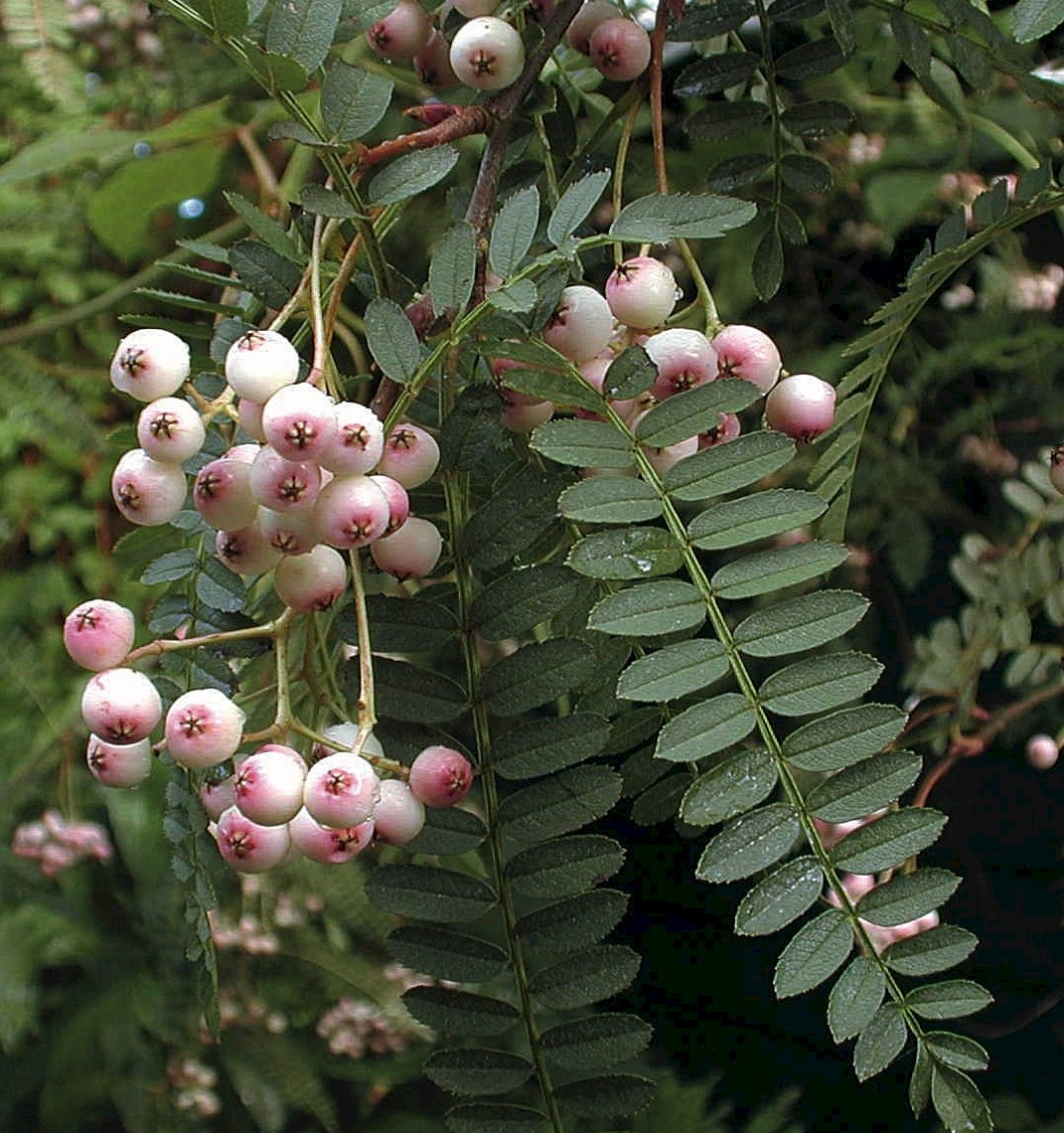Sorbus khumbuensis
Sponsor
Kindly sponsored by
This genus has been sponsored and new text is being prepared.
Credits
Article from New Trees by John Grimshaw & Ross Bayton
Recommended citation
'Sorbus khumbuensis' from the website Trees and Shrubs Online (treesandshrubsonline.
Genus
Other taxa in genus
- Sorbus americana
- Sorbus amoena
- Sorbus arachnoidea
- Sorbus aucuparia
- Sorbus carmesina
- Sorbus cashmiriana
- Sorbus commixta
- Sorbus coxii
- Sorbus decora
- Sorbus discolor
- Sorbus ellipsoidalis
- Sorbus esserteauiana
- Sorbus fansipanensis
- Sorbus foliolosa
- Sorbus forrestii
- Sorbus glabriuscula
- Sorbus glomerulata
- Sorbus gracilis
- Sorbus helenae
- Sorbus hupehensis
- Sorbus hypoglauca
- Sorbus insignis
- Sorbus 'Joseph Rock'
- Sorbus koehneana
- Sorbus kongboensis
- Sorbus kurzii
- Sorbus lingshiensis
- Sorbus matsumurana
- Sorbus microphylla
- Sorbus muliensis
- Sorbus olivacea
- Sorbus parvifructa
- Sorbus pohuashanensis
- Sorbus poteriifolia
- Sorbus prattii
- Sorbus pseudohupehensis
- Sorbus pseudovilmorinii
- Sorbus randaiensis
- Sorbus reducta
- Sorbus rinzenii
- Sorbus rubescens
- Sorbus rufopilosa
- Sorbus rushforthii
- Sorbus sambucifolia
- Sorbus sargentiana
- Sorbus scalaris
- Sorbus sitchensis
- Sorbus tianschanica
- Sorbus ursina
- Sorbus vilmorinii
- Sorbus wallichii
- Sorbus wilsoniana
Shrub or tree to 7.5 m. Branchlets slender, reddish brown with grey patches. Buds ~0.7 cm long, conical to ovoid, dark red with reddish brown hairs on the margins and apices. Leaves to 13 cm long, with 12–19 pairs of leaflets. Leaflets 2.1–5.5 × 0.8–1.7 cm, broadly oblong to elliptic, upper surface glabrous, lower surface not pap illose, margins dentate to the base; leaves turning reddish pink in autumn. Inflorescences lax with few flowers; flowers pink. Fruit initially dull crimson, but ripening to pink then white, apple-shaped, 0.85 × 1 cm; calyx lobes slightly fleshy with three distinct veins, carpels three to four (to five). Tetraploid apomict (2n = 68). McAllister 2005a. Distribution NEPAL: Khumbu. Habitat Betula-Rhododendron forest. USDA Hardiness Zone 6. Conservation status Not evaluated. Illustration McAllister 2005a; NT805.
Sorbus khumbuensis is a member of the S. microphylla aggregate of similar apomictic microspecies (see p. 807), but differs in several ways and has therefore been described and named as a distinct entity within the group. The type and only collection was made by Tony Schilling (Schilling 2341) in the Khumbu area of Nepal in 1978. It has proven to be a successful and easily grown garden tree, apparently tolerating drier conditions than other members of the S. microphylla group. From them it may be distinguished by its 12 to 19 pairs of leaflets, which turn an excellent red in autumn, its pink flowers, and fruits that turn from crimson to almost pure white as they mature (McAllister 2005a). Trees are well established at Wakehurst Place, Ness and other collections, but it deserves to be widely planted and is ideal for a small garden.


